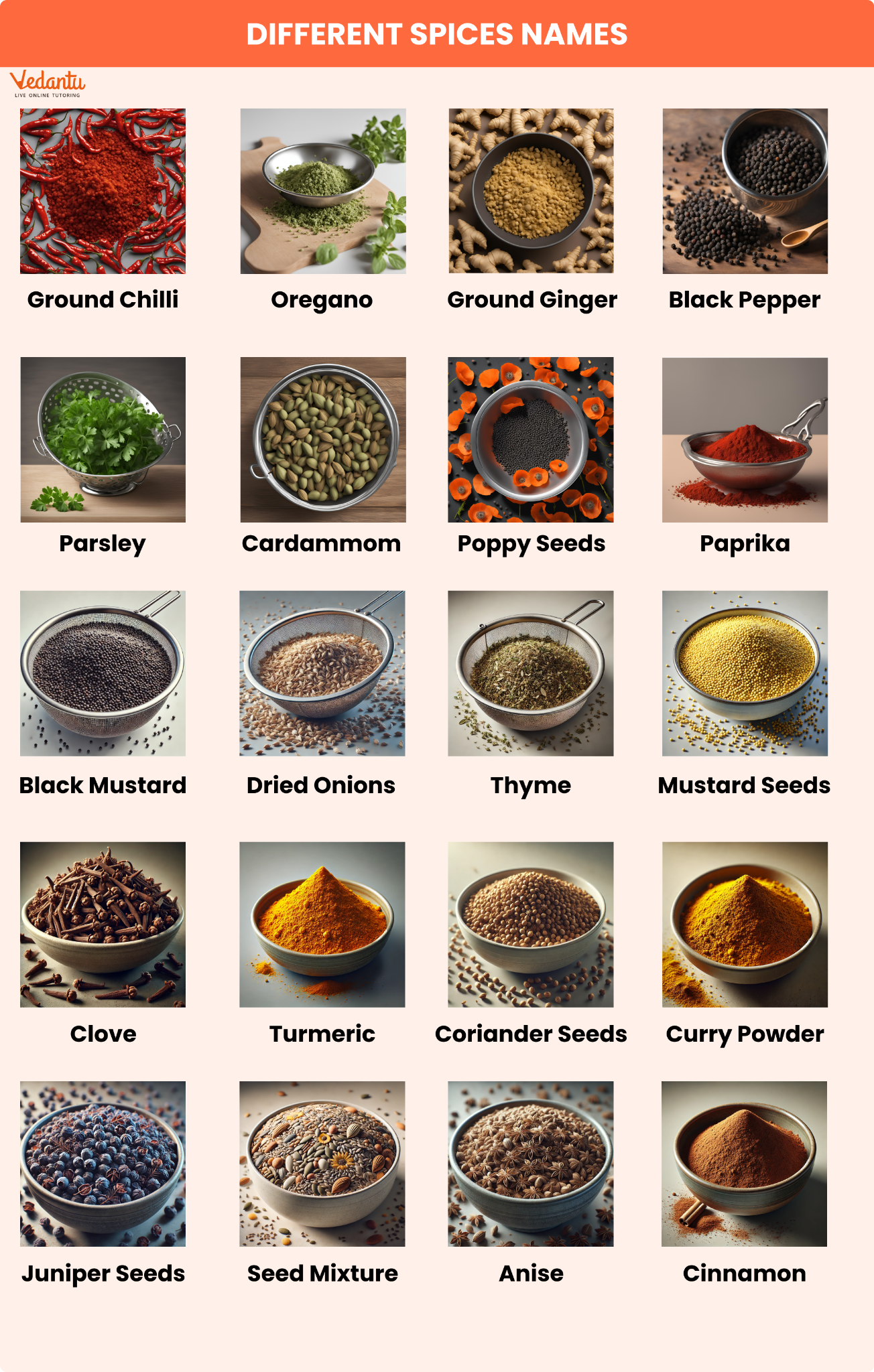




Learning Different Indian Spices Names
FAQs on Spices Names: A Complete List for Cooking Enthusiasts
1. What are some common spices used in everyday cooking?
Common spices include turmeric, cumin, coriander, cinnamon, black pepper, and ginger.
2. What is the difference between herbs and spices?
Herbs are usually the leaves of plants, while spices can come from seeds, roots, bark, or other parts of the plant.
3. How do I store spices to keep them fresh?
Store spices in a cool, dry place in airtight containers to keep them fresh for longer.
4. What is turmeric used for in cooking?
Turmeric is commonly used to add a warm, earthy flavour and a bright yellow colour to dishes like curries and rice.
5. Can spices have health benefits?
Yes, many spices like turmeric, ginger, and cinnamon are known for their health benefits, such as anti-inflammatory and digestive properties.
6. What is the difference between ground and whole spices?
Whole spices are the dried form of the spice, while ground spices are powdered. Whole spices retain their flavour longer, while ground spices are more convenient for quick use.
7. How can I tell if a spice has gone bad?
Spices lose their potency over time. If they no longer smell strong or taste as expected, they may have gone bad.
8. Why are some spices more expensive than others?
Some spices, like saffron, are expensive because they are labour-intensive to harvest and require large amounts of raw material to produce small quantities.
9. What is the difference between cumin and coriander?
Cumin has a warm, nutty flavour, while coriander has a citrusy, slightly sweet taste. They are often used together in Indian and Middle Eastern cooking.
10. Can I substitute one spice for another?
It depends on the recipe. Some spices can be substituted if they have similar flavour profiles, but this may change the overall taste of the dish.
11. What is the best way to grind whole spices?
You can use a mortar and pestle, a spice grinder, or a clean coffee grinder to grind whole spices.
12. Are there any spices I should avoid using too much of?
Some spices, like cloves and nutmeg, are very strong, so a little goes a long way. It’s best to use them in moderation to avoid overpowering the dish.
13. How do I use bay leaves in cooking?
Bay leaves are typically added to soups, stews, and sauces for flavour but are removed before serving as they can be tough to chew.
14. What are some sweet spices commonly used in baking?
Common sweet spices include cinnamon, nutmeg, cloves, and allspice, often used in desserts like pies and cookies.























